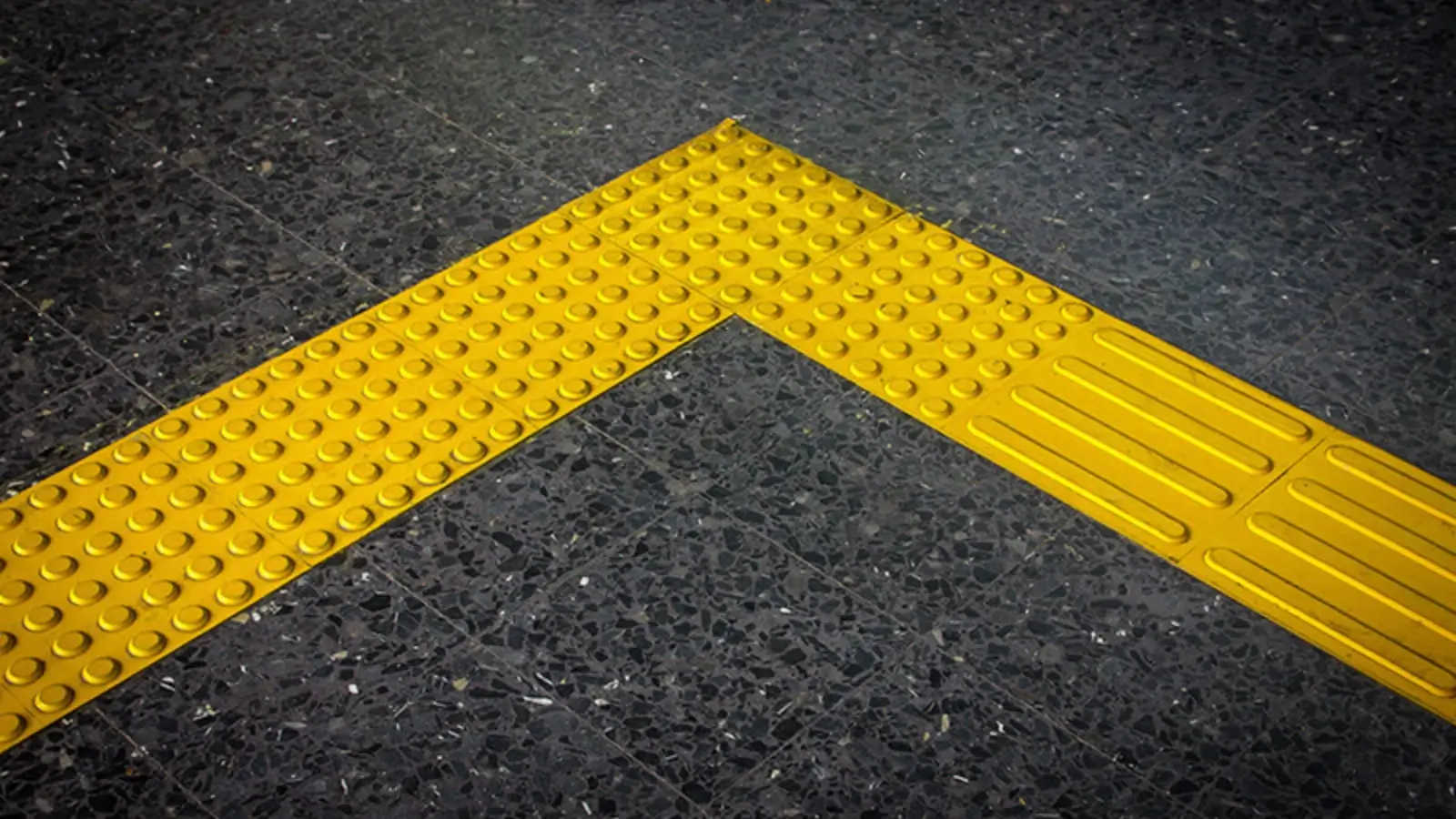— Tactile ground surface indicators help visually impaired pedestrians navigate public spaces safely and independently.
Introduction
Accessibility is a cornerstone of inclusive urban design. In Australia, city planners and builders must ensure that all citizens including those with visual impairments can navigate public spaces safely. That’s where tactile ground surface indicators (TGSIs) come in.
These small but powerful features communicate vital information through touch, allowing pedestrians to detect hazards, identify direction, and maintain independence.
What Are Tactile Ground Surface Indicators?
TGSIs are raised patterns installed on walking surfaces to assist people who are blind or have low vision. They use distinct textures that can be felt through footwear or a cane.
Two main types exist:
- Warning Indicators: Alert pedestrians to hazards like platform edges, road crossings, or staircases.
- Directional Indicators: Provide guidance along a safe path, often through open plazas or large foyers.
Why Are TGSIs Important for Public Safety?
The Australian Disability Discrimination Act (1992) requires equal access to public facilities. Installing tactile ground surface indicators ensures compliance with:
- AS/NZS 1428.4.1 – Design for Access and Mobility
- Local council accessibility standards
- Building Code of Australia (BCA) provisions
By creating consistent tactile cues, cities reduce accidents and promote inclusion for all pedestrians.
Where Should Tactile Indicators Be Installed?
Common Applications Include:
- Pedestrian crossings and kerb ramps
- Train and bus station platforms
- Shopping-centre entrances
- Stairways and escalator approaches
- Building lobbies and lift access points
- Public parks, paths, and car parks
Proper installation helps users identify where to stop, turn, or proceed safely.
How Are Modern TGSIs Manufactured?
Today’s tactile systems use durable, slip-resistant materials such as:
- Stainless steel
- Polyurethane or polymer composites
- Ceramic tiles
- UV-stable rubber
Modern manufacturing ensures longevity, easy maintenance, and high visual contrast between the indicator and surrounding surface.
What Are the Benefits of Installing Tactile Indicators?
- Enhanced Safety: Prevents falls and improves navigation for visually impaired users.
- Regulatory Compliance: Meets Australian accessibility standards.
- Durability: Withstands heavy foot traffic and weather exposure.
- Inclusive Design: Supports universal access and community engagement.
- Aesthetic Flexibility: Available in various colours and finishes to match architectural themes.
How Do You Ensure Compliance During Installation?
Builders and developers should consider:
- Correct spacing and alignment patterns as outlined in AS/NZS 1428.4.1
- Adequate contrast between TGSIs and surrounding surfaces
- Secure adhesion or mechanical fixing to prevent lifting
- Regular inspection to replace worn units
Partnering with experienced suppliers and installers ensures long-term performance and compliance.
What Makes Quality TGSIs Stand Out?
High-grade systems use:
- Precision-moulded studs for consistency
- Anti-slip surfaces tested under wet conditions
- UV-stabilised materials for colour retention
- Quick-installation methods reducing downtime
Such features ensure TGSIs not only serve their purpose but also complement modern architectural design.
Conclusion
Creating accessible spaces is not just a legal obligation, it's a moral and social responsibility. Installing durable, compliant tactile ground surface indicators makes Perth’s infrastructure safer and more inclusive for everyone.
When public areas are built with universal design in mind, the result is a city that prioritises dignity, access, and independence for all citizens.


